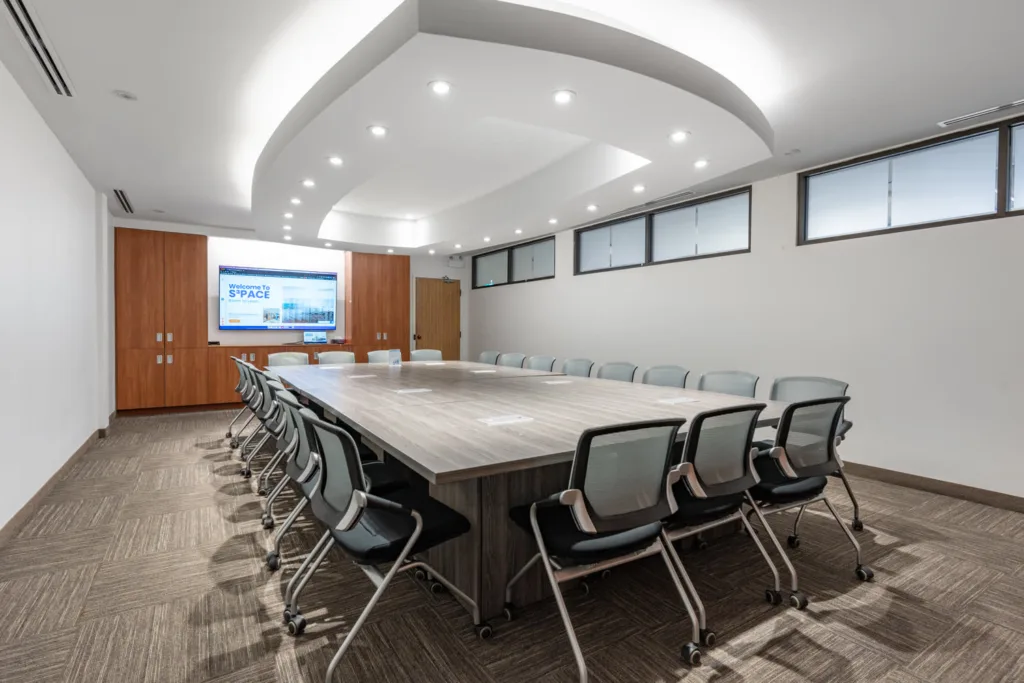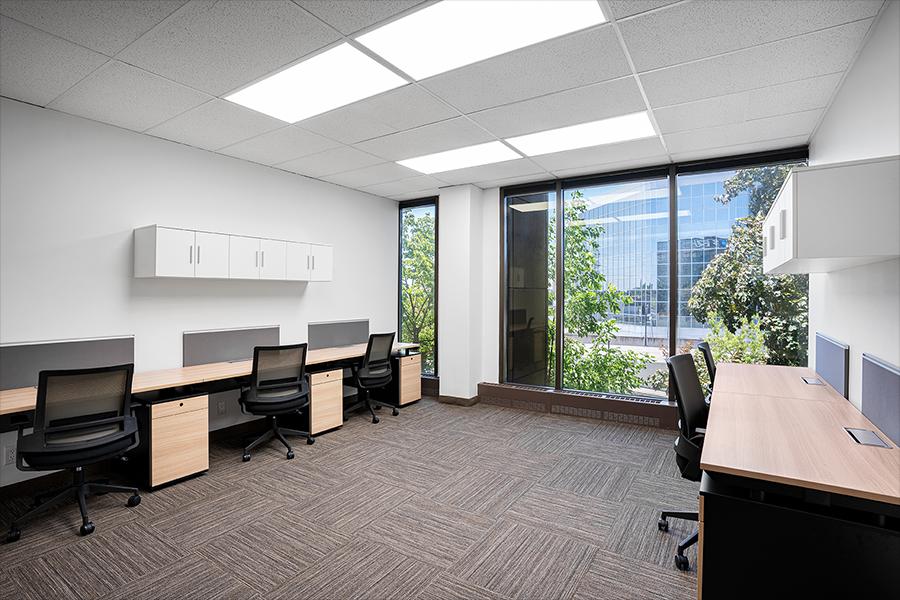
In today’s rapidly evolving business landscape, hybrid meeting rooms have become essential. With the shift towards remote work and the need for flexible working environments, these rooms offer a solution that combines the best of both worlds: in-person and virtual collaboration. This article explores the concept of hybrid meeting rooms, their benefits, and how they can transform the modern workplace.
The Evolution of Workplace Meetings
Hybrid meeting rooms are a response to the changing dynamics of the workplace. Traditionally, meetings were either fully in-person or entirely virtual. However, the advent of technology and the increasing demand for flexibility have led to the development of spaces designed to accommodate both in-person attendees and remote participants seamlessly.
Key Features of Modern Meeting Rooms
These meeting spaces are equipped with advanced technology to ensure smooth communication between in-person and remote participants. Key features include:
- High-Quality Audio and Video Equipment: Ensures clear communication.
- Interactive Whiteboards: Allows for real-time collaboration.
- Room Scheduling Systems: Manages meeting times and availability.
- Wireless Connectivity: Facilitates easy access to meeting resources.
- Comfortable Seating and Ergonomic Design: Enhances the overall meeting experience.
These features make modern meeting rooms a preferred choice for businesses looking to improve productivity and collaboration.
Benefits of Combining In-Person and Virtual Meetings
These advanced meeting spaces offer numerous benefits to businesses and employees alike:
- Increased Flexibility: Employees can join meetings from any location, reducing the need for travel and enabling a better work-life balance.
- Enhanced Collaboration: With advanced technology, participants can collaborate in real-time, regardless of their location.
- Cost Savings: Reduces the need for large office spaces and travel expenses.
- Improved Productivity: Meetings can be scheduled more efficiently, and participants can join from anywhere, reducing downtime.
Supporting Business Goals with Hybrid Meeting Rooms
By facilitating seamless communication and collaboration, these spaces help in achieving business goals such as:
- Improving Team Dynamics: Encourages interaction between team members, fostering a collaborative work environment.
- Enhancing Client Relations: Clients can join meetings remotely, making it easier to maintain strong relationships.
- Boosting Employee Morale: The flexibility of hybrid meetings can lead to higher job satisfaction and morale among employees.
Steps to Implement Hybrid Meeting Spaces
Implementing these modern meeting rooms requires careful planning and investment in the right technology. Here are steps to consider:
- Assess Your Needs: Determine the specific needs of your business and employees.
- Choose the Right Technology: Invest in high-quality audio-visual equipment, interactive whiteboards, and reliable connectivity solutions.
- Train Your Employees: Ensure that employees are comfortable using the new technology.
- Monitor and Improve: Continuously assess the effectiveness of your hybrid meeting spaces and make necessary improvements.

Overcoming Challenges in Hybrid Meetings
While these meeting rooms offer many advantages, they also come with challenges. Common issues include:
- Technical Difficulties: Connectivity issues can disrupt meetings.
- Participant Engagement: Remote participants may feel less engaged.
To address these challenges:
- Invest in Reliable Technology: Ensure that you have robust and reliable equipment.
- Encourage Participation: Use interactive tools and encourage feedback from all participants.
The Future of Meeting Rooms
As businesses continue to adapt to new ways of working, hybrid meeting rooms will play an increasingly important role. Future advancements may include:
- AI Integration: AI can help in scheduling meetings, taking notes, and providing real-time translation.
- Virtual Reality (VR): VR can create immersive meeting experiences, making remote participants feel like they are in the same room.
Conclusion
Hybrid meeting rooms are revolutionizing the way businesses operate. By providing a flexible and efficient meeting solution, they help companies navigate the challenges of the modern workplace. Whether it’s improving collaboration, reducing costs, or enhancing employee satisfaction, these spaces are an essential tool for any forward-thinking business.
By embracing the concept of hybrid meeting rooms, businesses can stay ahead of the curve and create a dynamic, flexible, and productive work environment. The future of work is hybrid, and these meeting rooms are at the forefront of this transformation.






